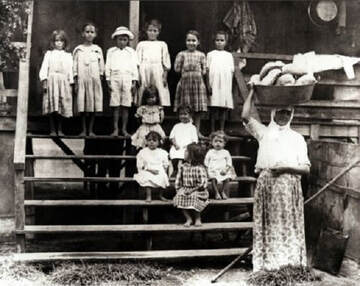Pidgin, Creole

What is the difference between a pidgin language and a creole language?
“Pidgins and creoles are new languages that develop in language contact situations because of a need for communication among people who do not share a common language. A pidgin continues to be used primarily as a second language for intergroup communication, whereas a creole has become the mother tongue of a particular group of speakers” (Siegel, 2012).
The word pidgin, from 1826, comes from the form of English used in China for communication with Europeans. Pidgin represents the Chinese pronunciation of the word business. The word pidgin became part of English vocabulary in 1876.
Creole has its origins in Proto-Indo-European (PIE) ker(2) (to grow) and Latin creare (to make, bring forth, produce). Creole, meaning a person born in a country but of a people not indigenous to it, is from around 1600.
In brief, a pidgin language is created when people from two different language groups meet in the same location for one reason or another and need to quickly find ways to communicate. If the pidgin language becomes a language in its own right, it is known as a creole language.
For example: Urdu, a language widely used in the Indian sub-continent, was once a pidgin language. The word Urdu comes from Tatar urda and Turkish word ordu (a camp, an army). In the 11th century, Urdu was created when the Mongol invasions brought Arabic, Persian, and Turkish languages to the local Sanskrit-based languages. Within generations, Urdu had become a creole language and in 1947 became a national language of Pakistan—a country that still comprises several different ethnic groups each with their own language.
A similar story on a smaller scale can be seen in 19th century Hawaii. Thousands of workers from China, Vietnam, Thailand, the Philippines, and other Asian countries were brought to Hawaii to work in the pineapple and sugar cane plantations. Within a generation or two, as the children of these workers played (and worked) together, they created their own creole version of Hawaiian English which is still in use today.
Image: Wikipedia, public domain
Reference: Online Etymological Dictionary, https://www.etymonline.com/
Siegel, J. (2012). Pidgins and creoles. The Oxford Handbook of Applied Linguistics (2nd Ed.).
https://www.oxfordhandbooks.com/view/10.1093/oxfordhb/9780195384253.001.0001/oxfordhb-9780195384253-e-26
Published on January 21, 2022 21:51
No comments have been added yet.



